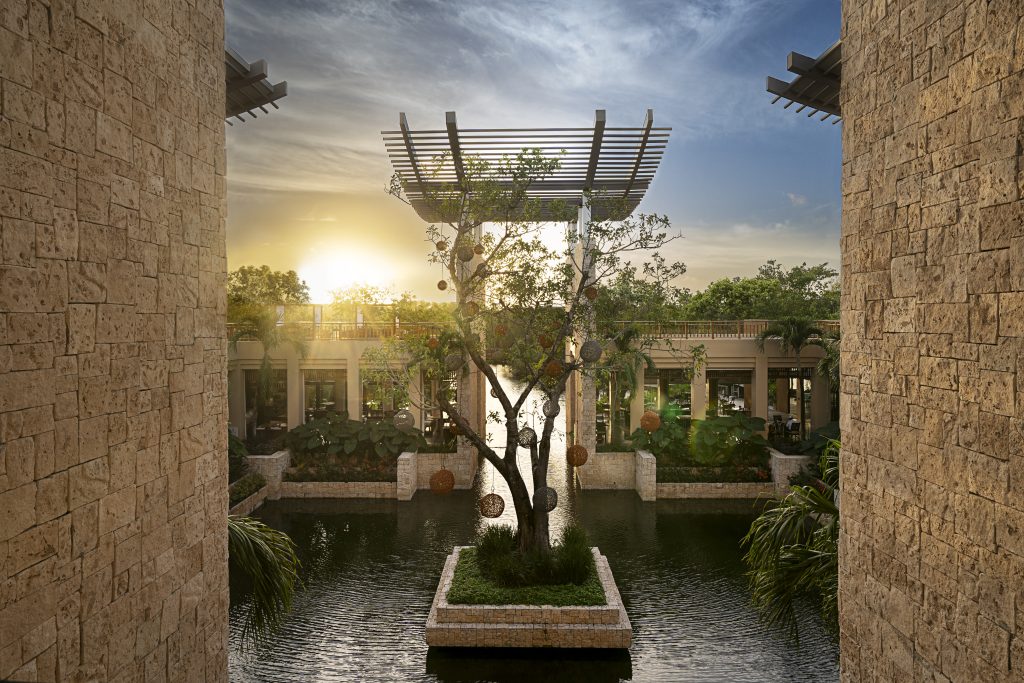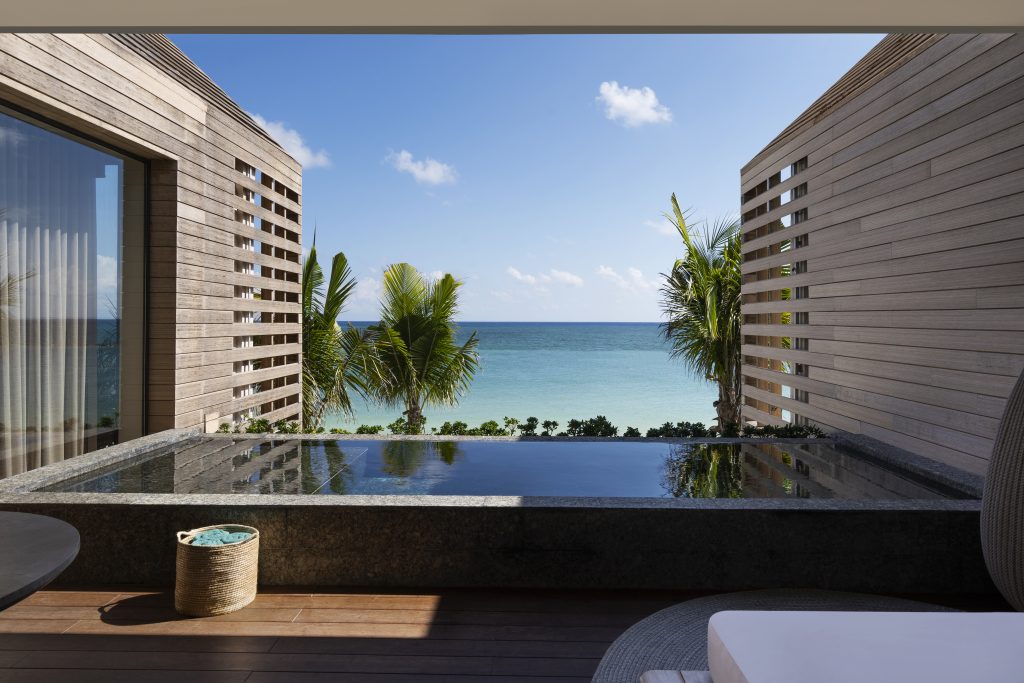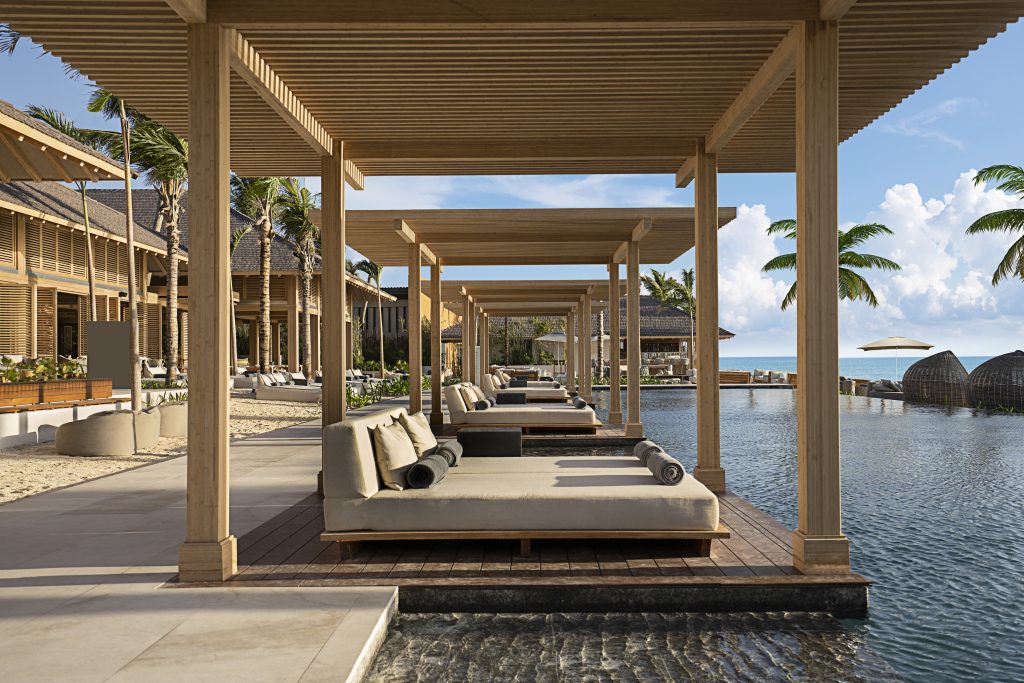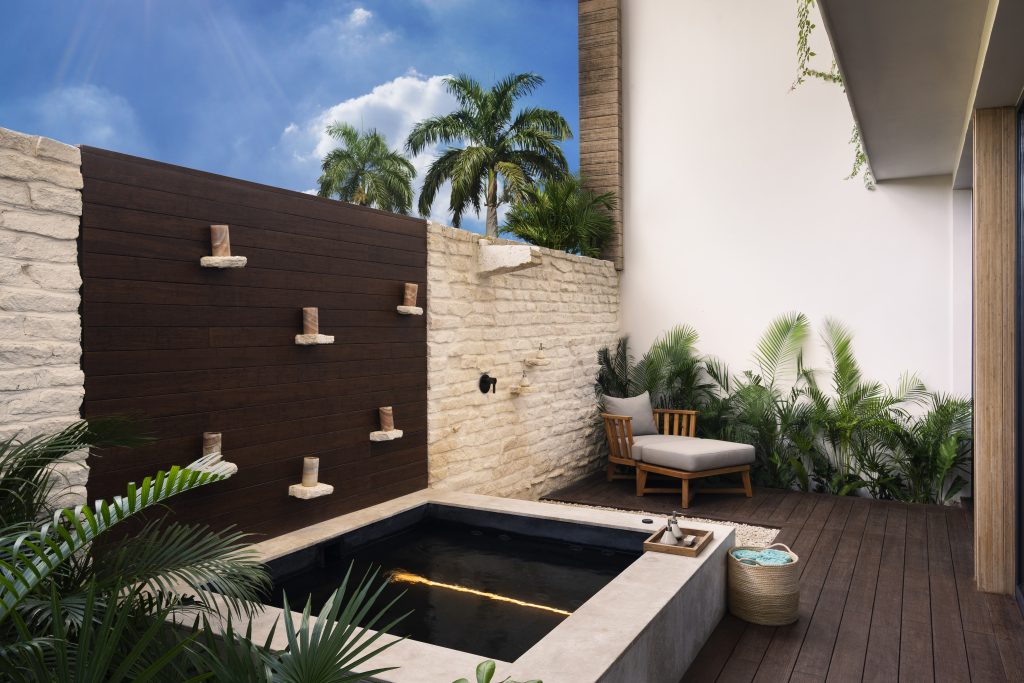Riviera Maya’s Accessible Oasis, Banyan Tree Mayakoba
Eco-conscious travelers will feel a world away at this ocean-meets-jungle property

For those seeking a “fly and flop” vacation—an easy trip to a beautiful destination with plenty of lounging around—finding the ideal spot can be difficult. Plenty of hotels that cater to that idea are massive, a little soulless, or don’t focus on details beyond the cocktails. Anybody interested in an easy vacation that also means supporting the local community, conserving the environment, enjoying design and still relaxing within a tropical oasis will surely appreciate Banyan Tree Mayakoba.

Located on Mexico’s Yucatán Peninsula, just a 40-minute drive from the Cancún International Airport, Riviera Maya is super-easy to get to from many parts of the US, though it’s especially favorable for a quick weekend getaway for East Coasters—a direct flight from JFK to Cancún is around four hours. Even though it’s accessible, entering Banyan Tree Mayakoba still feels like entering another world. As one of four luxury hotels in Mayakoba—a 500-acre gated community on the outskirts of Playa del Carmen—this property is an ocean-meets-jungle paradise.

Though the property first opened in 2009 and recently underwent a $50 million expansion, Mayakoba as a whole was originally purchased by a Spanish construction company back in the 1980s, when it was still a big area of undeveloped jungle and beach. For many years, the construction company—Obrascon Huarte Lain (OHL)—didn’t know what to do with all of that land, which belonged to ancient Maya people. But then OHL’s Salvador Linares came along with an ambitious vision to turn it into an eco-conscious tourism destination built around a series of man-made canals.

Today, all four hotels in Mayakoba sit behind a protected coastal mangrove forest, surrounded by crystal-clear lagoons and the aforementioned canals that connect the properties to each other (the community is sometimes referred to as the “Venice of the Yucatán” because you can take small boats to and from each one). Mayakoba is also often cited as a global model for sustainable hotel development, as it was built with great care around the existing wildlife and plant-life in the area. In 2019, it was awarded the PROFEPA certification, Mexico’s highest level of certification in environmental performance for sustainable and responsible tourism development.

Aside from being part of eco-minded Mayakoba, Banyan Tree’s own conscious design and sustainability initiatives stand out. On the design front, while Banyan Tree’s Singaporean roots mean that their global properties are Asian-inspired, the Mayakoba outpost is also infused with Mexican influences. As a result of the recent $50 million expansion, the property—which has 161 suites and villas in total, all with private pools—just debuted 34 new private beachfront pool suites, seven overwater villas, ocean-view massage rooms, an infinity pool beach club and a raw bar and restaurant.

The design of the additions, including the beachfront pool suites, was led by renowned Mexican architect Sordo Madaleno, who used local materials—namely tropical wood and chukum—to create indoor-outdoor areas that blend into the natural environment. A marker of traditional Mayan architecture, chukum is an ancient Mayan building technique that has experienced a revival throughout Mexico in recent years, especially in the southeast of the country. It mixes limestone-based stucco with resin from chukum trees, a species endemic to the Yucatán region. Not only is using chukum a win from a cultural and environmental standpoint, its smooth, neutral and minimalist look and feel creates a soothing sanctuary vibe as well.

Single-use plastics are a rare sighting at Banyan Tree. They’ve switched out all of their plastic water bottles for glass bottles, and plastic straws for paper straws. The spa uses handmade ceramic containers for all of their treatment products, which are prepared by therapists at the time of a session using only natural ingredients like apple, ginger, avocado, lemon, honey, oatmeal, sugar and more. The massage oils are also certified for biodegradability, which reduces the amount of chemicals needed to wash the linens after a massage. The property even transformed some of their villas into special new wellbeing sanctuaries this year to help guests recover from the stress of the pandemic. Guests who stay in those sanctuaries will find wellness accouterments like yoga mats and singing bowls in their rooms, and will have access to the property’s wellbeing hosts, who can help them design a customized wellness journey.

Banyan Tree Mayakoba does their part to support the local community in the Yucatán, too. One of the hotel’s main global initiatives is The Seedling program, which aims to nurture young people in the surrounding area by providing education and vocational skills that prepare them for the future—and many of the participants are then hired for full-time positions on property. The hotel also provides training for locals in the community to start their own businesses in all of their locations around the world, with the aim of helping to create a regenerative economy. At the Mayakoba location, for example, they’re currently supporting a local business called “Tsaak Mejem Kaab,” which sells soaps made from melipona honey, a local Yucatán honey produced by stingless melipona bees (a species native to the Yucatán). Like many treasures in the Yucatán, melipona honey was once used in Mayan healing to treat a range of conditions from eye issues to digestive troubles, and many healers still use it today. These sweet-smelling honey soaps are offered as an amenity in the rooms at Banyan Tree, and can also be purchased in the gift store at the hotel.

And therein lies the true beauty of Banyan Tree Mayakoba. The amenities and the gorgeous location and the soothing sanctuary vibe are already appealing enough to hold up on their own—but the thoughtful initiatives behind them give your trip even more meaning.
Images courtesy of Banyan Tree Mayakoba












